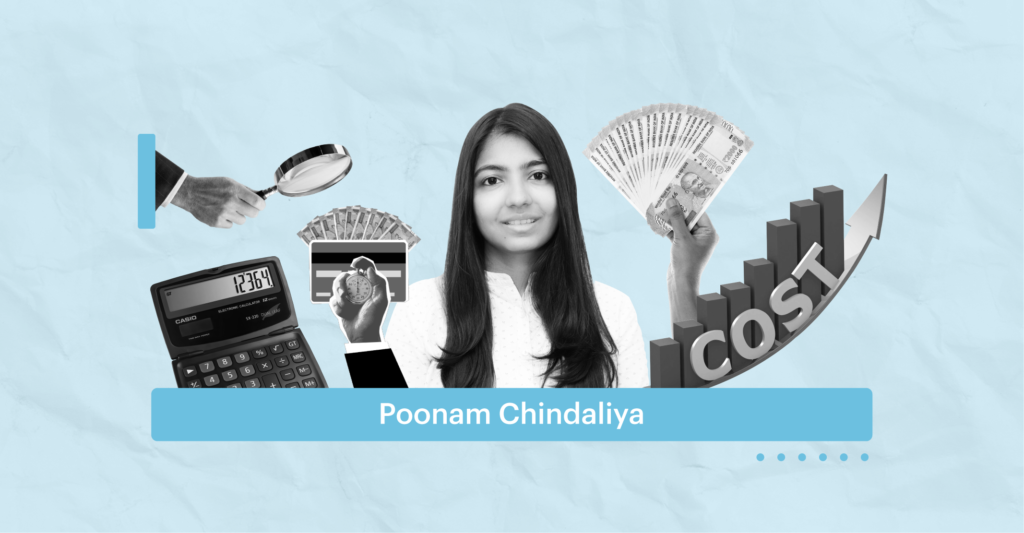Last Updated on Oct 31, 2022 by
Whenever we start investing, the first question that we all have is which company to look at out of the 5000+ listed companies in the Indian stock market. How do we shortlist a few good companies out of these 5000 companies? Let us figure that out in this article.
There are two approaches to screen companies: Bottom-up and top-down.
Table of Contents
1. Bottom-up approach
This approach involves starting from the micro situation. First, you shortlist a company and then understand the sector or industry dynamics. So how can you shortlist companies? There are various methods and mentioning a few of them below.
- Track corporate announcements – All the listed companies are liable to disclose any important information related to their operations to the shareholders. You can find these filings on BSE or NSE. Let’s understand how corporate announcements can help in shortlisting by taking the example of Power Mech Projects Ltd.
So, on 18th August 2022, the company informed the shareholders via exchange filing that it had received an order worth Rs. 6,163 cr.
If you had seen the last few years’ revenue trends, you would have understood it was a big order.
The next step is understanding if the company fits your framework (we will discuss the framework in subsequent articles). This way, tracking corporate announcements can help you generate stock ideas. Also, since the date of announcement, this company has delivered ~50% returns.
- Special situations – Sometimes, companies opt for mergers, demergers, rights issues, buybacks, delisting etc. These situations can sometimes provide a good opportunity to buy stock. Merger with a competitor/supplier/customer can be synergistic and lead to volume growth or margin expansion, which in turn might increase the ROE/ROIC of the company. Demergers can lead to value unlocking for a segment of the company which is profitable and was used to cover the loss of other segments.
- Screens – You can run various screens to shortlist companies based on your investing framework. Sharing a few examples below –
- Cash per share – Sometimes the market is so bearish on a few companies that they are available at less than their book value or Cash and Cash Equivalent (CCE) they have in their books. So, you can run a simple screen whereby you take cash and cash equivalents and the company’s market capitalisation and compare them. If MCAP < CCE, it might be worthwhile to spend some time on the company. For example, in March 2020, Mastek’s cash per share was almost equal to its share price, which means you were getting the business for free. Guess the returns you would have generated by holding the stock till now; it’s a whopping 500%+.
- Capex – Companies usually do capex when they see huge demand, and their existing capacity cannot cater to that demand as it is already running at full capacity. This gives an idea about the company’s growth prospects as we can calculate the peak revenue they can achieve from the new capacity based on historical asset turns of the company. So, you can screen companies that are doing huge capex. For example, recently, a lot of chemical companies have announced huge capex.
- Margin expansion – Margin expansion is one of the important indicators of the company’s competitive advantage (not in the case of cyclical companies). This is not always true because a very high margin might attract competition if there are no/low entry barriers in the industry. During COVID-19, a lot of companies faced margin pressure due to an increase in commodity prices. You can run a screen to find companies whose margin has not declined significantly, stayed the same, or increased, and study them to understand if they have any competitive advantage.
- Growth + ROE/ROIC – You can use various filters like sales growth > 15%, ROE/ROIC > 15%/20%, +ve OCF, Mcap > 100cr etc., to shortlist companies.
- Valuation multiple – Sometimes, a few companies are in the despair phase and are available at very low multiples. You can study these businesses and keep them in your watchlist and buy them when some market interest starts building up. “There are decades where nothing happens, and there are weeks where decades happen” – Vladimir Ilyich Lenin.
Example: For the majority part of 2018 & 2019, Tata Chemical was trading at a PE of just 2-3x which has now rerated to ~18-20x.
- Promoter buying – The promoter knows more about the company than shareholders or the public. So, if a promoter buys the company’s shares from an open market, it might signal that they find the company cheap at the current market price or are very confident about future growth.
For example, promoters of Sheetal Cool Products have been continuously buying the company’s shares since December 2018.
Guess the return during the same period; It’s 340%+.
Note: However, you should never buy just based on the fact that the promoter is buying. It’s just a way of screening stock. You need to do an in-depth analysis and see if the company fits your investment framework or not.
- Fund house/ Portfolio Management Services (PMS)/well-known investor buying – If you like any well-known investor’s process or investment framework, you can track what they are buying and selling. However, just because someone is buying doesn’t mean you’ll also buy. You have to do your homework and see if it fits your investment framework. For example, Anil Goel is known for great entry and exit timing in cyclical industries like Sugar. So, you can track what he is buying as a starting point for your research.
- Technical analysis – Charts and volume data are another way to shortlist stocks. There are various indicators that people generally use, like stocks nearing 52-week or all-time highs, range breakouts, pattern breakouts, and Exponential Moving Average (EMA) convergence, to name a few.
- Network – You can get ideas by speaking to people in the investment community who have knowledge/expertise and whom you trust.
Note: Stocks mentioned above are for educational purposes and should not be treated as investment advice.
2. Top-down approach
This approach involves finding sustainable or long-term macro trends and then studying companies that are beneficiaries of those trends. Now, you must be wondering where you can get to know about these macro trends. There are many ways to find out these macro trends, mentioning a few of them below –
- Increase in per capita income -> Increase in penetration – What is the first thing you will buy if your salary increases from Rs. 10,000 pm. to Rs. 25,000 pm? Try to answer this question, and you’ll find many investing ideas. If your salary increases, your consumption of salt or Colgate won’t go up significantly, but you might think of buying a smartphone, AC, cooler, washing machine, insurance, mutual fund, etc.
- Observe the behaviour of millennials – Notice their consumption patterns – do they prefer brands (shift from unorganised to organised) over cost? Are they okay with repeating clothes or not? How badly do they want to follow trends or don’t mind what’s happening? Given a choice will they buy an iPhone or prefer a value-for-money brand? Will they buy gold jewellery over a luxury brand? Will they choose travelling the world vs buying a house? Try to answer these questions to get an idea about their consumption pattern.
- Political situation – Political disruption in any country that is a major producer or supplier of a product or commodity can open up an opportunity for other countries that are producers of the same products. A recent example is the Russia-Ukraine war which opened up opportunities for the defence sector.
- Disruption – Technological disruption is one of the classic examples of how an industry comes in or goes out of favour. We all know what happened to Kodak, Nokia etc., because they didn’t adapt themselves to the changing environment. Currently, the Auto Sector is going through one of the major changes as EVs are replacing internal combustion engines. Look for industries that are going through any kind of disruption and see if you can find any investable opportunities there. Or find sectors or industries that won’t face disruption.
- Environmental situation – ESG (Environment, Social and Governance) became an important criterion recently for stock selection. A lot of fund houses came with ESG funds. Two examples are a ban on Plastic by the Government, which has opened up opportunities for paper and packaging companies and the shutdown of chemical plants by the Chinese government because they were polluting the environment, which opened up opportunities for Indian chemical companies. Look for companies that use sustainable resources for production and take care of minority stakeholders.
- Demand Supply scenario – Understand the sectors where demand has gone out temporarily due to recession or black swan events like COVID-19 etc., and can bounce back quickly. Or find industries with a structural shift due to which demand has increased significantly. Then find out players with strong balance sheets who can increase supply quickly. See if there are very high entry barriers due to which new players can’t enter even though demand is huge.
- Government incentive – Sometimes the government gives incentives to boost or protect a certain industry. For instance, recently, the government announced the Production Linked Incentive (PLI) scheme for various industries. See if these incentives can help the industry or if a few industry players position themselves as the best supplier.
- Technical analysis – Charts can also help in identifying the macro trends. If most of the stocks of a certain sector or a sectoral index are breaking out or hitting or nearing a 52-week high or all-time high with good volumes, we can get a clue regarding which sector is coming in favour and can study companies of that sector.
Always look at the entire supply chain and not just the end product manufacturer of the trending sector. After finding the trend, the most important way to select the stock within that industry is to look at management’s execution skills, willingness to share profits with minority shareholders, and valuation.
Conclusion
To conclude, there are various sources of idea generation, some being as simple as observing the behaviour of millennials, speaking to people in your network, reading about what’s happening worldwide, running a few screens or looking at charts. But always remember that it’s just a starting point, and you need to figure out if that idea fits your investing framework or not. You can only build up your position in a particular stock when you have a conviction, which will come with in-depth analysis and experience.
- Research Framework 1O1 – Part 1 - Apr 19, 2023
- How To Prioritise Company or Industry Research Post Shortlisting? - Dec 1, 2022
- How To Shortlist Good Companies Out of 5000+ Listed Companies? - Oct 28, 2022




